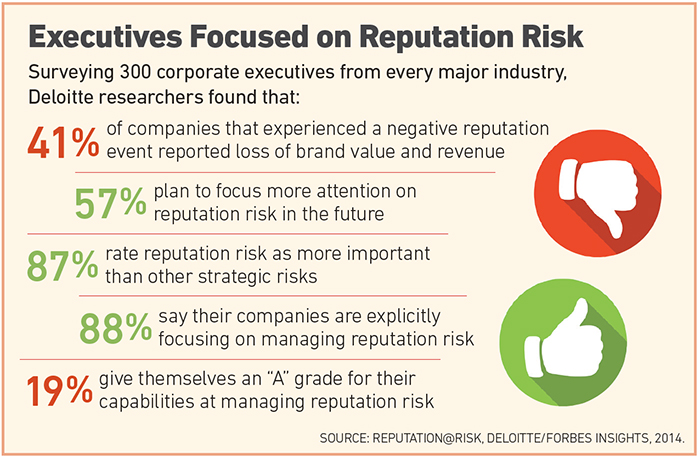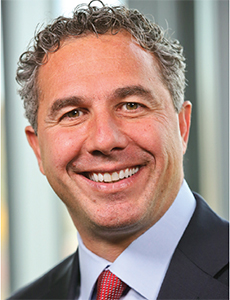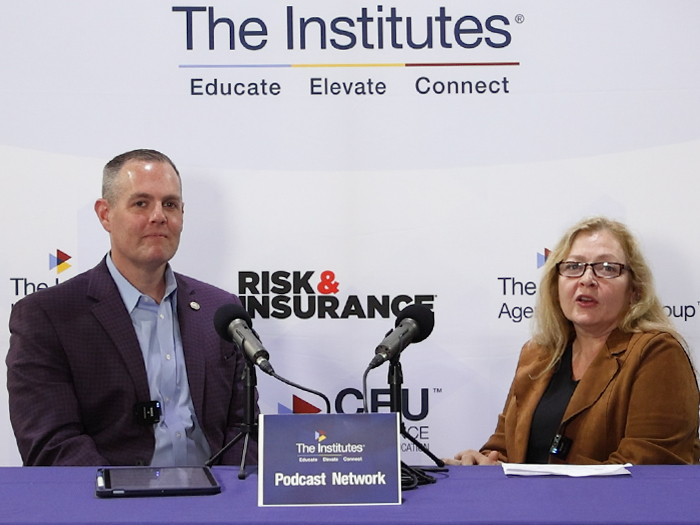Risk Focus: Reputation
Gear Up for Social Media Battles

In this increasingly technologically advanced world, it seems that no one is immune from the reaches of social media.
With nearly 2.5 billion social media users worldwide, it’s more likely than ever that a company could see its hard-earned reputation shattered overnight.
Worse still, a recent Grant Thornton survey found that companies are massively exposed, with 59 percent of respondents saying they don’t carry out any form of social media risk assessment.
Because of the unpredictability and speed at which reputational damage can spread on social media, risk managers and companies need to be proactive and have a plan in place should the worst happen. But in doing so, they need to first consider all risk mitigation and transfer options available, including artificial intelligence (AI) and algorithms.
Dealt with properly, an incident can be turned around and potentially even enhance a company’s reputation. But handled badly, it can result in millions of dollars in lost sales and severely damage a company’s share value.
“The danger of not having a plan to manage reputational risk on social media is that if something negative is posted about your organization, before you know it, it has gone viral, causing untold damage to you and your brand,” said Elizabeth Carmichael, president of Carmichael Associates.
Reputational Risk Dangers
Reputational risk on social media has undoubtedly been heightened by the rise of fake news, making it increasingly difficult to distinguish between fact and fiction, said Steel City Re’s CEO Nir Kossovsky. It has been exacerbated by a growing sense of anger and frustration among large swaths of the population, he said.
“There’s sometimes a temptation to be dismissive of an initial social media attack, especially if you consider it unjustified or the source is not credible,” he said.
“But that is no longer acceptable given the blurring of lines between real and fake news and the speed at which fake news can travel.”

Anthony de Fazekas, head of technology and innovation, Canada, Norton Rose Fulbright, Toronto, Canada
Failure to tackle the problem can often worsen the situation, said Anthony de Fazekas, head of technology and innovation, Canada, with Norton Rose Fulbright. That is because inaction can be seen as an admission of guilt, he said.
“This can impact your claim as well,” he said.
“In the courtroom, if a party takes no action for what is considered a ‘long time’ in social media time, despite having knowledge of a defamatory statement, the defendant can hold up their inaction to suggest that, if the statement was untrue, more should have been done.”
The result can be millions of dollars in lost revenue and customers, and ultimately a tarnished reputation, said Chandra Seymour, senior vice president with Marsh Risk Consulting’s strategic risk consulting practice. The only sure way of addressing that, she said, is to get out in front of the problem.
“Tackling the issue proactively is the only way to ensure it doesn’t get out of hand,” she said.
“Reputation typically accounts for 30 percent of a company’s stock price and getting it back can be much harder than had you taken proactive steps to protect it in the first place.”
Randy Nornes, executive vice president at Aon, said that the first step a company should take is to identify risks that might lead to dissatisfaction among stakeholders. The company should then create a plan for how to tackle the problem should it arise and regularly monitor social media for commentary about the company, he said.
“What most organizations struggle with is identifying someone to be responsible for monitoring and managing that particular risk,” he said.
“Then they need to determine what the escalation process is if something does happen,” he added.
Chuck Saia, CEO, risk and financial advisory for Deloitte, said that leveraging advanced analytics can help companies weed out negative social media. Simulating a hypothetical ‘what if?’ scenario also can help detect reputational threats, he said.
“As a best practice, these ‘wargames’ should be conducted at least twice a year, not as a pro forma exercise, but as strategic opportunities to improve the organization’s overall reputation and resiliency.” — Chuck Saia, CEO, Deloitte Risk and Financial Advisory
“Typically viewed as a cyber risk management exercise, these simulations should extend to address all potential threats on reputation, brand and value,” he said.
“As a best practice, these ‘wargames’ should be conducted at least twice a year, not as a pro forma exercise, but as strategic opportunities to improve the organization’s overall reputation and resiliency.”
Artificial Intelligence
A recent Deloitte survey found more than half of companies plan to address reputational risk by investing in technology such as analytical and brand monitoring tools. Boards also are beefing up their in-house PR and social media monitoring capabilities, it said.
One possible solution is Artificial Intelligence (AI), said William Atak, reputation expert at SafeOnNet. Atak said AI can be used to detect potential and upcoming crises, as well those that happen suddenly. This may include the use of robots to promote positive stories online, at the same time suppressing unwanted or negative news, he said.
“You can use AI to monitor and warn companies alike — in that way, you can prepare yourself when other companies are in or about to enter a crisis situation,” he said.
“In the future, you will get more advanced tools to handle these kinds of situations, as the robots get better at detecting positive or negative outcomes.”
Marcus Smith, vice president for reputational risk at Polecat, said that algorithms can be employed to identify and track emerging reputational risk in real time.
Companies can then use that data to tailor their risk management strategies accordingly, whether related to the workplace, employee safety, company share price or upcoming financial results, he said.
“The most prominent example of this was with Uber when a social media campaign was started, urging users to boycott the service after the CEO was accused of sexual harassment in the workplace,” he said.
“But thanks to the use of AI, stakeholders were able to get a sense for how deep public dissatisfaction was going to be, which ultimately led to the CEO’s departure.”
Furthermore, said Dan Zitting, chief product officer at ACL, AI can be used to identify and classify certain sentiments into categories of severity. As the algorithms and models become smarter, they can classify larger volumes of data faster, he added.
“By using natural language processing and machine learning to look at a body of text, posts or Tweets, you can quickly identify certain sentiments and categorize them in terms of potential maliciousness or events,” he said.
“Monitored over time, you can then see where spikes start to emerge and gear your program toward dealing with those.”
Holistic Approach
While AI is undoubtedly a key tool in any risk manager’s armory, companies need to take into account all forms of risk transfer and mitigation when dealing with reputational risk, said Kossovsky.
“Companies need to be prepared in advance with strategies for pre-empting and responding immediately and forcefully when social media is weaponized against them,” he said.
“They need to adopt an integrated approach that includes risk mitigation, financing and transfer that tell a compelling story to stakeholders and indemnifies any potential targets within the organization.”
Seymour added: “A lot of firms are still trying to get to grips with social media risks. For many, the biggest challenge is just the sheer volume of data and how to handle it in an appropriate manner.” &











